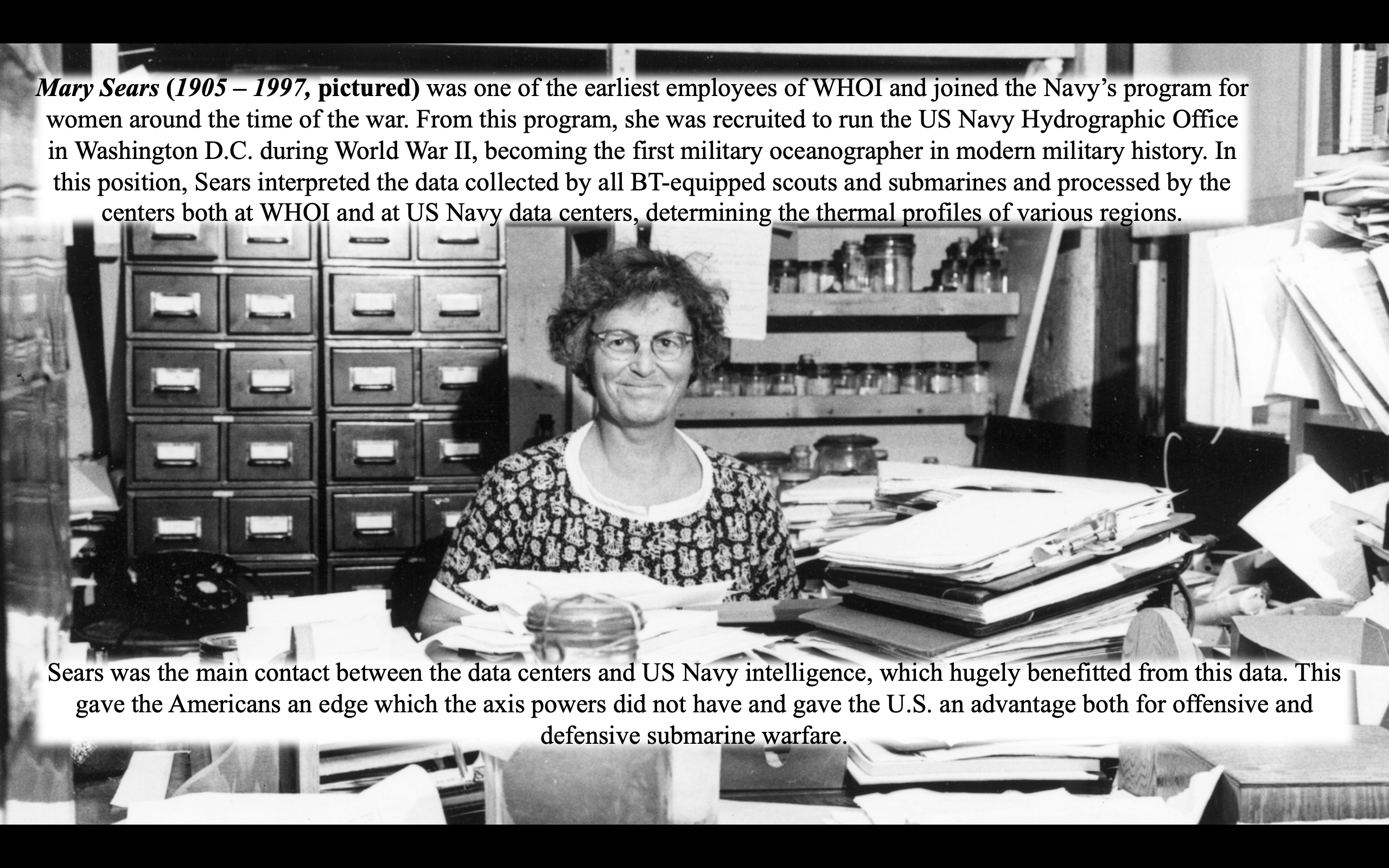150 Years of Woods Hole Science
42

Background image: Mary Sears posing behind stacks of work., 1960. Credit: WHOI Image Archives; Photo courtesy of WHOI Archives; with special permission of WHOI Digital Assets Licensing; from: https://images.whoi.edu/view-item?key=SXsiUCI6eyJ2YWx1ZSI6IjEwMjM0NCIsIm9wZXJhdG9yIjoxLCJmdXp6eVByZWZpeExlbmd0aCI6MywiZnV6enlNaW5TaW1pbGFyaXR5IjowLjUsIm1heFN1Z2dlc3Rpb25zIjo1LCJhbHdheXNTdWdnZXN0IjpudWxsfX0&WINID=1643768606696#6PlW-aAH2KcAAAF-uD5aUQ/102344
References:
Cullen, V., 2005. Down to the sea for science: 75 years of ocean research, education, and exploration at the Woods Hole Oceanographic Institution. Woods Hole Oceanographic Institution.
p. 58
Revelle, R., 1980. The Oceanographic and how it grew. In Oceanography: the past (pp. 10-24). Springer, New York, NY.
pp. 16-17:
“Ewing and Iselin showed how the records could be used to determine the performance of submarine-detecting sonar gear. The result was that by the end of World War II, thousands of bathythermographs had been built and distributed to naval anti-submarine ships in both the Atlantic and the Pacific. Hundreds of thousands of BT slides (only a few of which had been created by imaginative quartermasters scratching a trace on the smoked glass by hand) were collected and sent to Woods Hole and Scripps for analysis. Although limited to the upper water layers, these records represented a much larger volume of ocean data than had ever been obtained before. After the war, physical oceanographers were able to use the BT as an invaluable tool to obtain a detailed time and space picture of variations in the ocean.”
p. 22:
“Because the Federal Government has very little memory, it is generally forgotten that the first Oceanographer of the Navy in modern times was a short, rather shy and prim WAVE Lieutenant, j.g., who organized and led a new Oceanographic Unit of the Navy Hydrographic Office during World War II. At that time, the Hydrographic Office was a macho organization mainly engaged in making and printing navigation charts. They were not quite sure what they were doing with a small group of mostly biological oceanographers led by a woman. But they underestimated the powerful natural force that is Mary Sears. That tiny Oceanographic Unit soon became a Division, and finally the entire Hydrographic Office evolved into the Naval Oceanographic Office, headed by an admiral with the proud title of Oceanographer of the Navy.”
Unpublished document in archives- commendation from US Navy to WHOI for the bathythermograph’s usefulness in the war to Vine and Bumpus, who were still WHOI personnel at the time.